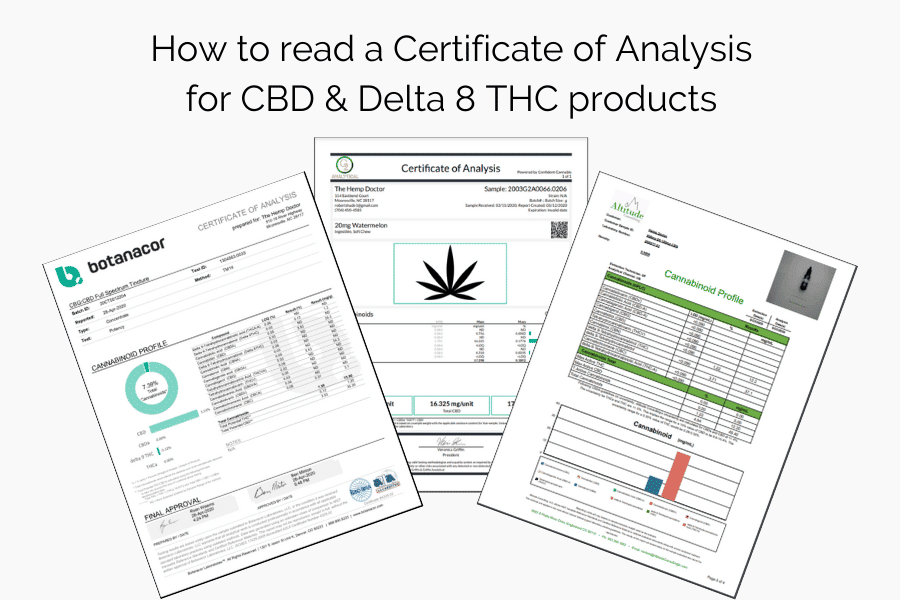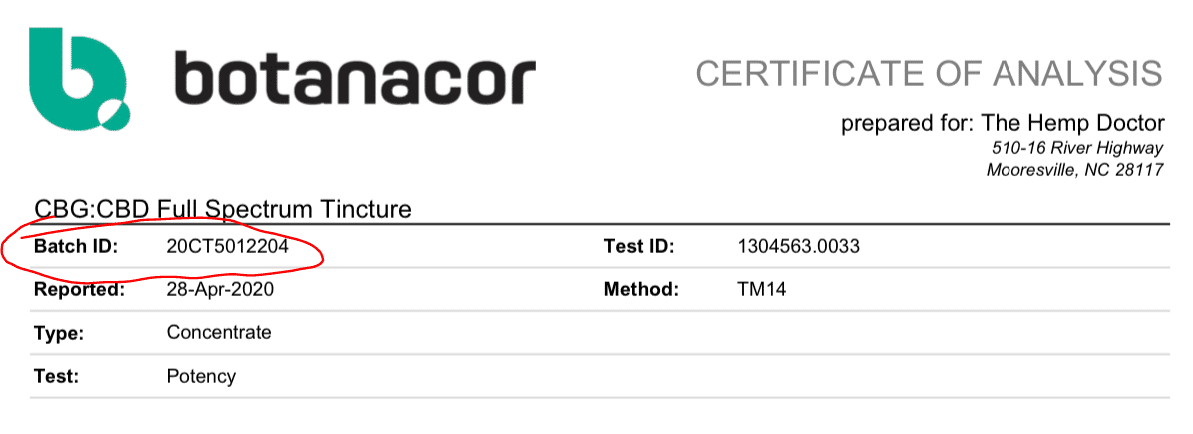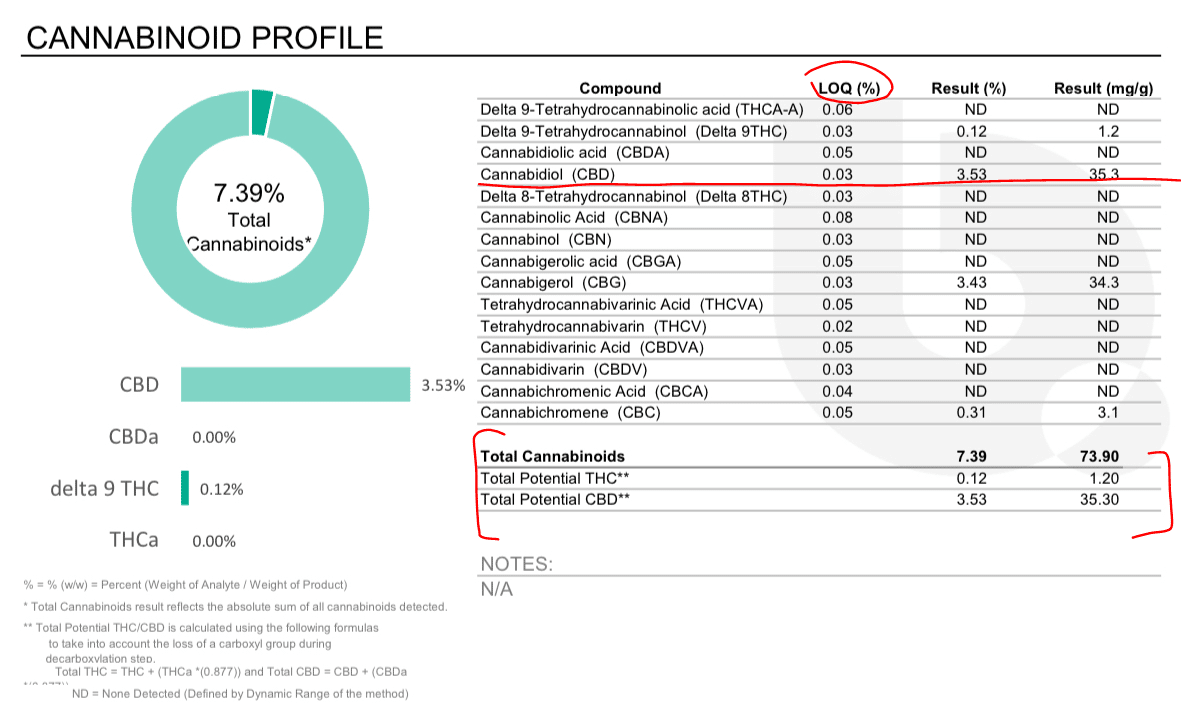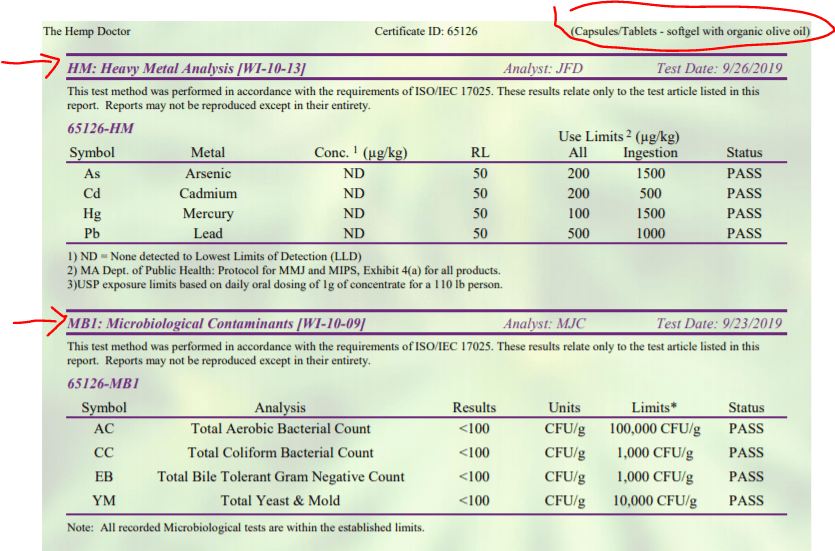
A certificate of analysis (COA) is crucial when contemplating the purchase of a hemp-based product. This need is brought to the forefront because the hemp product industry is currently unregulated by the Food and Drug Administration (FDA). Without this oversight, CBD and other hemp-based products are often mislabeled by unscrupulous retailers. Some studies have shown that 70% of the CBD products on the market today are mislabeled. Without the ability to confirm the accuracy of the product’s label, you are likely to purchase something that, at best, doesn’t contain the amount of CBD or other cannabinoids that you expect. At worse, the product may contain harmful substances that you then go on to ingest. Insisting that any hemp product you purchase carries a certificate of analysis issued from a third-party laboratory is the only way you will know that you are getting what you pay for and ensuring that your health is protected.
What Is a Certificate of Analysis? (COA)
A certificate of analysis is the laboratory report issued by an independent, accredited laboratory after testing is done on a product. There are specific elements tested for hemp products, such as the amount of cannabinoids, terpenes, and the presence of possible contaminants. Once the tests are run, a certificate of analysis is the laboratory report that reveals the lab’s findings. Often, a hemp product retailer will have different laboratories test the various categories of their products. For instance, one lab may test the retailer’s tinctures while another lab tests their hemp flower. Therefore, you will find that these reports may look different from one lab to another, and some may include information that does not appear on another lab’s statement. With that in mind, we’ve created the following guide to instruct you on how to read the most often used categories of a COA report, as these categories may or may not be included on a specific laboratory’s COA for the type of product tested.
How to Read a COA for CBD & Delta 8 THC Products
Each certificate of analysis has a header and a footer, and a different section for each category is analyzed. You need to know what each paragraph is for, read each area, and understand how to interpret what you are reading.
The Heading of the COA
At the top of the COA, you will find the company’s name that ordered the testing, the testing laboratory, and the date of testing. You will also find the batch number related to the product that interests you. Compare the batch number to the product you are considering to make sure they match and check the date to be sure it has been recently tested. If not, contact the company to see if you can get a report on the batch you are considering or a more recently tested batch. Also, be sure that the testing was done by an independent laboratory and not the same company that ordered the product.

The Cannabinoid Section
The Cannabinoid section is essential because it will show a list of cannabinoids found in the hemp product and the amount of each cannabinoid. These tests look for the full range of cannabinoids like CBD, CBN, CBG, etc., so each will be listed. As you read across the line, you may see the initials “LOQ.” LOQ stands for Limit of Quantitation. This is set by the testing laboratory and is at the lowest level of detection. This is irrelevant information to you as you educate yourself about the product. If you see a less than sign with LOQ in one of the quantity fields, it means that there isn’t enough to be detected. You may find other columns of that cannabinoid within that product and the mass in milligrams per unit. If this is a liquid product like a tincture, one milliliter weighs about the same one milligram.

Compare the amount of each cannabinoid on the product label to the laboratory COA to ensure the label is accurate. You may also want to check the THC level in the product to ensure it’s federally legal. Legally, the product must contain no more than .3% THC by weight. However, be sure only to check the Delta 9 THC level when determining its legality. Delta 8 THC is federally legal at higher levels.
Synthetic Cannabinoids
Synthetic cannabinoids are designed to mimic the same kind of “high” experienced when using THC. However, these cannabinoids are man-made chemicals that are more potent than the THC that naturally occurs in cannabis plants. Common names for these synthetic compounds are “spice” and “k2,” These synthetic cannabinoids are often included in the hemp product or sprayed on the raw cannabis plants before processing by unscrupulous manufacturers.
The problem with synthetic cannabinoids is that the human body does not react to them the same way as plant-based cannabinoids. While the CB1 receptor of the brain works well with normal cannabinoids, synthetic cannabinoids will bind to the CB1 receptor to the point that it is hard for the body to remove. This binding can cause serious side effects. Because of this, it is important that, when you are reviewing the cannabinoid section of the certificate of analysis, be sure no synthetic cannabinoids are listed.
The Mycotoxins Section
Mycotoxins are a CBD contaminating mold. Aflatoxins tend to be the most harmful and, unfortunately, the most prevalent. Other mycotoxins to look for are ergot, ochratoxin, patulin, citrinin, and fusarium.
Residual Heavy Metals, Solvents, Hydrocarbons, and Pesticides Section
Because the hemp plant tends to absorb heavy metals and pesticides from the soil, this section is valuable in determining if too many toxins have been absorbed to be healthy. Also, some hemp extraction methods involve the use of solvents or hydrocarbons, and, therefore, there may be residual unhealthy compounds in the product. This section shows the testing results for these elements, and maybe all in one area or split up into different sections. These areas display what toxins were found, the amount found, and whether the amount passes or fails limits set by governmental standards for acceptable levels not to be considered harmful.

Terpenes Profile
Terpenes are found in the glands of the cannabis plant. They are what give the plant flower its distinct aroma when broken apart or when smoked. These terpenes are also what give the cannabis plant a lot of its therapeutic properties. If your CBD or Delta 8 THC product COA contains a terpene profile, it is for information purposes as this is nothing that you would need to be concerned about regarding being harmful.
Flavonoids Profile
The cannabis plant contains 23 flavonoids. These are what give the botanical plant its color and are a valuable, nutrient-rich substance. Flavonoids contribute to the therapeutic effects of a plant as they trigger biochemical reactions in the body. Like terpenes, these are not harmful, so they are of no concern and are listed in a COA for informational purposes.
Microbiological
Plants, including cannabis plants, are host to many different bacteria and microbes. Some of these microbes are harmful, such as salmonella, mold, and yeast. These microbes should be destroyed as the oils are extracted from the hemp plant and then processed into a final product., But sometimes, these processes do not kill the bacteria and microbes, and they are not something you want to ingest. This section will show each of the bacteria and microbes tested for, the bacterial colony count (shown as CFU for colony forming units), and if that count is a safe level.
Stay Informed & Choose a Reputable Company
We at The Hemp Doctor, America’s Premier Hemp & CBD Dispensary, are proud to offer a certificate of analysis on every one of the products we carry. As such, we devote an entire section of our website to these lab results. Our CBD & Delta 8 THC product COAs can be counted on to be among the most trusted and accurate in the industry. We understand that our transparency is vital in ensuring that you are getting a quality product every time. Unscrupulous hemp product retailers are known to hide that their products do not contain the number of cannabinoids promised on their labels. Such rip-offs are common in the CBD industry, and third-party lab testing will ensure that you do not fall victim to these scams.
Also, because of the lack of governmental oversight, you must have independent verification on anything that you will ingest through your digestive tract, inhale through your lungs, or rub on your skin to make sure that the product does not contain substances that may harm you. Please don’t trust your health to a hemp product retailer who does not provide a COA for their CBD or Delta 8 THC product! Trust a premium retailer like The Hemp Doctor for all of your CBD, Delta 8 THC, and other hemp product needs.






